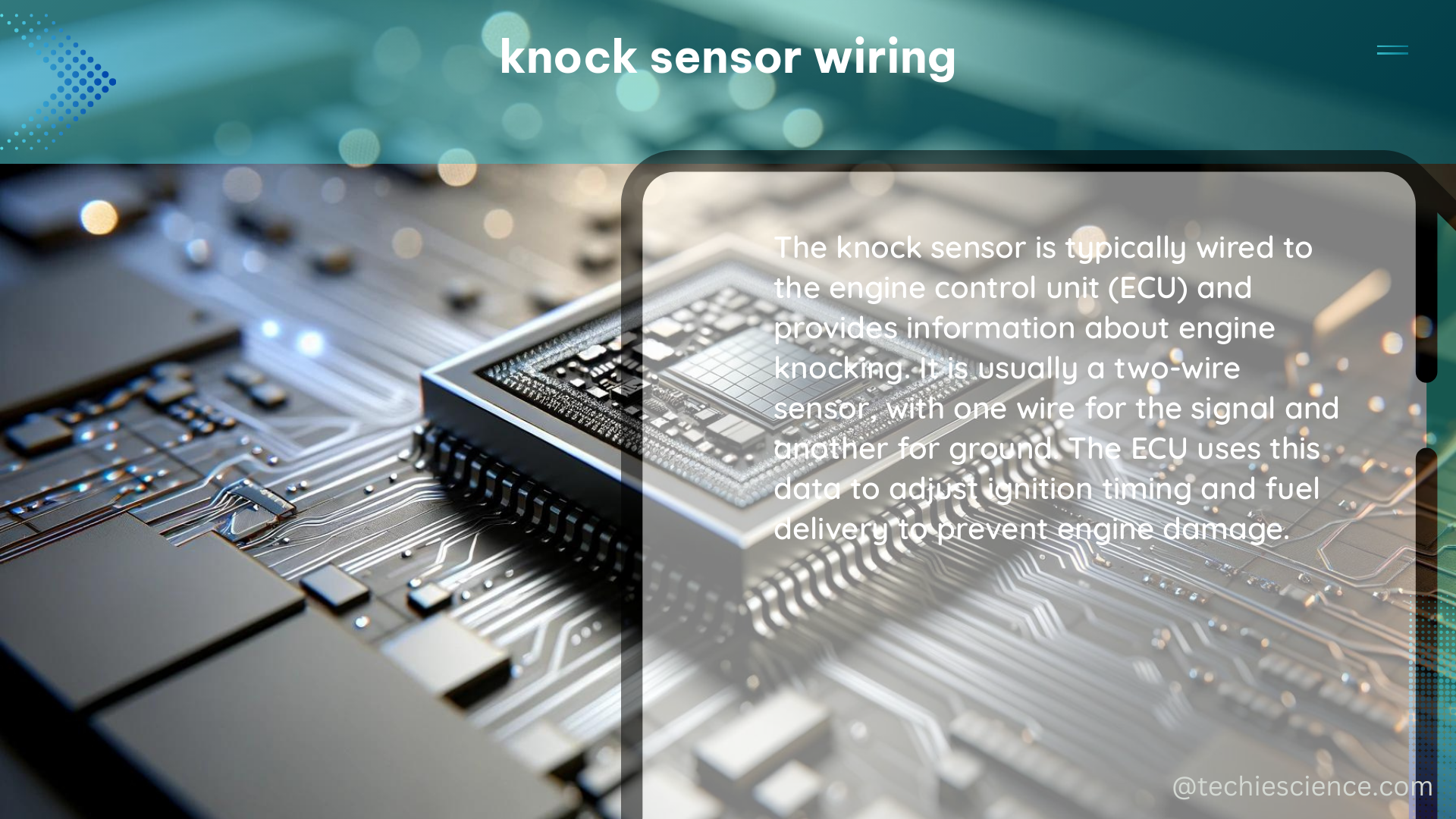Knock sensors are critical components in modern engines, responsible for detecting engine knocking or detonation. Understanding the wiring of these sensors is essential for ensuring their proper functionality. This comprehensive guide will provide you with a wealth of measurable and quantifiable data points to help you navigate the intricacies of knock sensor wiring.
Polarity Sensitivity in Bosch Knock Sensors
Bosch knock sensors are widely used in the automotive industry, and their wiring can be a source of confusion. According to a discussion on the HP Academy forum, Bosch knock sensors generally have no inherent polarity. However, some Bosch sensors may have polarity, which can be determined by checking the resistance between the center boss and both pins. If either pin has continuity to the center boss, it must be connected to the ground pin.
Resistance Variations

In the same HP Academy discussion, a user mentioned that their Bosch knock sensor had different resistance values when measuring between pin1 and pin2 compared to pin2 and pin1. Specifically, they observed a resistance of 5.3MOhm between pin1 and pin2, and 4.5MOhm between pin2 and pin1. This discrepancy indicates that, at least electrically, there is a difference between the two pins.
Voltage Measurements
In a Honda-Tech forum post, a user suggested probing the ECU pin to check the knock sensor. By attaching the red power lead to a T-pin in the knock sensor and the black lead to the chassis, one can measure the AC voltage. A voltage reading of approximately 0.5V to 5V indicates that the sensor is working correctly.
Ohm Meter Testing
In the same Honda-Tech forum post, another user suggested using an ohm meter to test the knock sensor. By measuring the resistance between the sensor and ground, one can determine if the sensor is present. However, it’s important to note that there is a risk of damaging the sensor with the voltage typically put out by an ohm meter, so this method should be used with caution.
Shielded Wiring
A post on the Honda-Tech forum mentioned that unshielded wiring for knock sensors can cause false readings. Shielded wiring, like the OEM wire, is recommended to ensure accurate readings and prevent interference from other electrical components in the vehicle.
Wiring Harness and Connector Locations
In a Rennlist post, it was mentioned that if the wires lead to the ECU at the right locations, and there are no shorts, it has to be the sensor. Testing the sensor with an ohm meter to ground is theoretically possible, but this method should be used with caution to avoid damaging the sensor.
Additional Considerations
- Ensure that the knock sensor is properly grounded to the engine block or chassis to prevent false readings.
- Check for any damage or corrosion in the wiring harness or connector, as this can also lead to sensor malfunctions.
- Consult the manufacturer’s specifications or service manual for your specific vehicle to ensure that you are following the correct wiring and testing procedures.
By understanding these measurable and quantifiable data points, you can effectively troubleshoot and maintain the knock sensor wiring in your vehicle, ensuring optimal engine performance and preventing costly repairs.
Reference:
– Bosch Knock Sensor Wiring
– Ways to Testing to See if Knock Sensor is Dead or Wiring Problem
– Archaelogical Dig Finds Knock Sensor in Worst Shape of All Time

The lambdageeks.com Core SME Team is a group of experienced subject matter experts from diverse scientific and technical fields including Physics, Chemistry, Technology,Electronics & Electrical Engineering, Automotive, Mechanical Engineering. Our team collaborates to create high-quality, well-researched articles on a wide range of science and technology topics for the lambdageeks.com website.
All Our Senior SME are having more than 7 Years of experience in the respective fields . They are either Working Industry Professionals or assocaited With different Universities. Refer Our Authors Page to get to know About our Core SMEs.